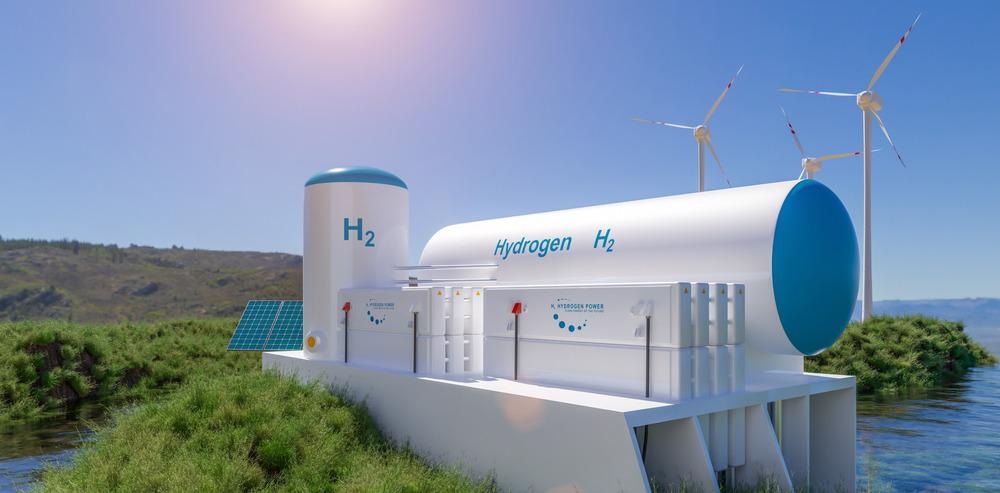With the increasing pressure to adopt new strategies to address carbon emissions and meet climate change goals, industries are looking to new technologies to help switch their reliance on fossil fuels to renewables. The automotive industry is one of the world’s greatest polluters, and it is within this industry that intense research is underway to discover how to improve the performance of battery and fuel cells and to facilitate their widespread adoption.

Image Credit: Alexander Kirch/Shutterstock.com
Scientists in Japan have uncovered a way of using ultraviolet light to enhance the functionality of solid-state electrolytes in batteries and fuel cells. The research is paving the way to commercial-scale renewable energy systems.
The Global Effort to Switch from Combustion Engines to Renewable Alternatives
There is currently a global effort across all sectors to reassess processes and usher in new systems that are environmentally friendly to meet the climate change goals of the Paris Agreement, which seeks to limit the average global rise in temperature to 2 °C, preferably 1.5 °C.
It is estimated that internal combustion engines operating on fossil fuels are currently responsible for generating roughly one-quarter of the world’s power supply. They also account for around 10% of the world’s emissions. Therefore, combustion engines are a major contributor to carbon emissions, and, in shifting our reliance on combustion engines to renewable alternatives, the world’s annual carbon emissions may drop significantly.
Other factors such as the risks to human health related to exposure to air pollution caused by combustion engines, and growing resource scarcity are also encouraging the shift from combustion engines to renewable alternatives.
Fuel cells offer an attractive alternative to internal combustion engines due to their environmentally friendly operation and high efficiency at generating power. However, fuel cell technology has yet to achieve significant market penetration due to several challenges, with factors such as durability, functionality, and performance still requiring improvements before full end-user acceptance can be obtained. Enhancing these factors is vital to advancing the path towards successful fuel cell commercialization.
Innovating a Way to Enhance Fuel Cell Functionality with Ultraviolet Light
Researchers at the University of Tsukuba, Japan, have established a method for modulating oxide ion transport in a perovskite crystal via the use of ultraviolet light.
The research, published in September 2021 in the journal Applied Materials Today, demonstrates how the motion of oxide ions within perovskite crystals can be induced at room temperature using pulses of ultraviolet light, an approach that will enable scientists to enhance the functionality of solid-state electrolytes in fuel cells and batteries, thus helping to develop commercial-scale renewable energy systems.
Coupling Cobalt Crystals with Ultraviolet Light
A fuel cell or battery cell’s electrolyte performance is dependent upon the movement of electrons and ions inside of the electrolyte. Therefore, modulating this motion has the potential to improve the functionality of fuel cells and batteries. In controlling the motion of these electrons and ions, scientists have the possibility of increasing a fuel cell or battery’s energy storage and output efficiency.
Studies had shown that light could be used to modulate the movement of ions, but this research was limited to small ions, for example, protons. The team of scientists at the University of Tsukuba set out to overcome this limitation with its recent research project.
For many years, the transport of heavy atoms and ions in solid-state materials has proved difficult to accomplish. The team at the University of Tsukuba aimed to establish a simple method of transporting these heavy atoms in a way that is easily integrated with renewable energy inputs.
Cobalt double-perovskite crystals became the focus of the research, due to their similarity to the common materials often used in fuel cell research.
The team discovered that exposing the crystals to ultraviolet light at room temperature had the effect of displacing the oxide ions within them. It was able to do this without destroying the crystals, therefore, maintaining the function of the crystals. These results were confirmed via electron diffraction and spectroscopy.
The team confirmed that while delivering 2 millijoules of energy per square centimeter, roughly 6% of the oxide ions within the cobalt crystals underwent substantial disorder in just several picoseconds, with no damage to the crystal.
Interestingly, cobalt-oxygen bonds usually result in a significant restriction in oxide motion, however, with ultraviolet light, electron transfer is induced, which effectively breaks these bonds. Oxide ion motion is facilitated in a way that accesses numerous states that are fundamental to the storage of light energy.
A Future of Commercial-Scale Renewable Energy Systems is Made Possible
The findings of the research have the potential to be leveraged into numerous applications. First, however, more research is needed to gain a deeper understanding of how light can be used to manipulate crystal structures that are invaluable to energy storage. The results of such studies will likely lead to the development of commercial-scale renewable energy systems.
References and Further Reading
Hada, M., Ohmura, S., Ishikawa, T., Saigo, M., Keio, N., Yajima, W., Suzuki, T., Urushihara, D., Takubo, K., Masaki, Y., Kuwahara, M., Tsuruta, K., Hayashi, Y., Matsuo, J., Yokoya, T., Onda, K., Shimojo, F., Hase, M., Ishihara, S., Asaka, T., Abe, N., Arima, T., Koshihara, S. and Okimoto, Y., 2021. Photoinduced oxygen transport in cobalt double-perovskite crystal EuBaCo2O5.39. Applied Materials Today, 24, p.101167. https://www.sciencedirect.com/science/article/pii/S2352940721002316
University of Tsukuba (2021) New opportunities for light-powered battery and fuel cell design. [Online]. Science Daily. Available at: https://www.sciencedaily.com/releases/2021/09/210908180453.htm (Accessed 6 October 2021)
Wang, J., Wang, H. and Fan, Y. (2018) Techno-Economic Challenges of Fuel Cell Commercialization. Engineering, 4(3), pp.352-360. https://www.sciencedirect.com/science/article/pii/S2095809917307750
Disclaimer: The views expressed here are those of the author expressed in their private capacity and do not necessarily represent the views of AZoM.com Limited T/A AZoNetwork the owner and operator of this website. This disclaimer forms part of the Terms and conditions of use of this website.